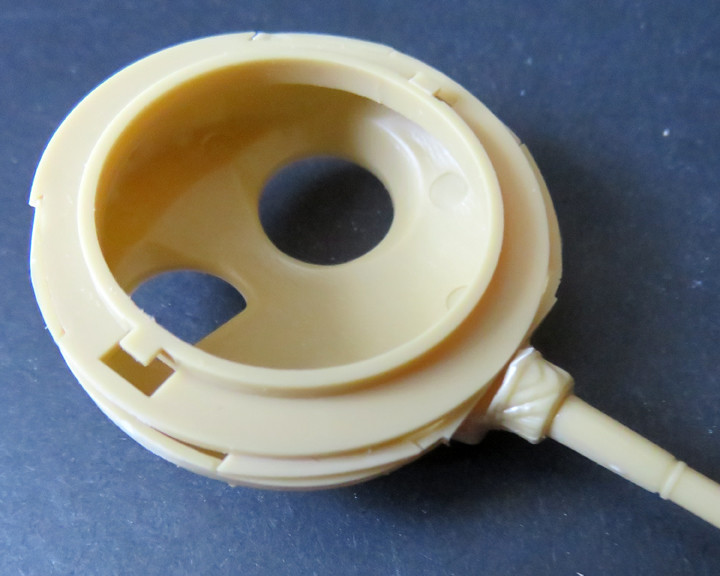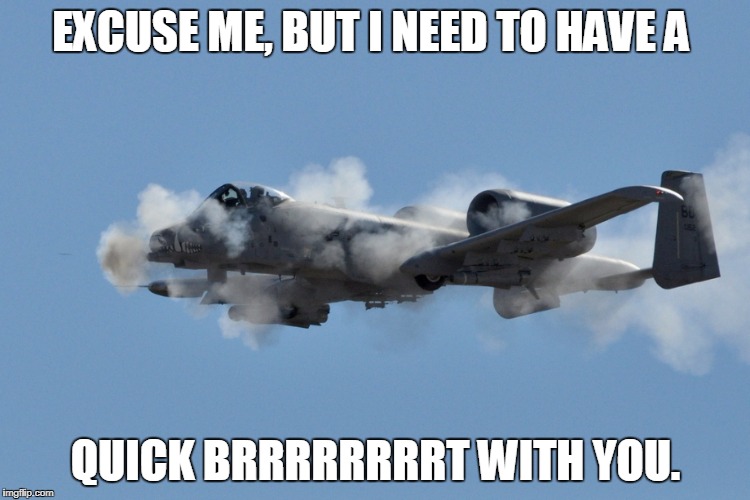
This kit was originally released in 1988 and has been re-boxed several times since, but the moulding still looks crisp with very little in the way of flash or seams on first inspection

The instructions are contained on one side of a single sheet and seem pretty straightforward

The flip side has the painting/decaling schemes

I'm expecting the decals to take longer than the build

I like to display my aircraft in flight for the most part so was disappointed to find that there was no driver included which means that I'll have to fit one in from this set

Here's the information about the A-10 from the kit instruction sheet:
With a nickname of “Warthog”, it’s quite clear that the Fairchild A-10 is not a pretty aircraft! However, beauty was not a part of the concept behind this formidable attack plane. Mounted in its nose is one of the deadliest weapons ever to cruise the skies. Called the GAU-8/A Avenger, it is a 30mm cannon capable of firing up to 70 rounds of heavy ammunition per second! With a muzzle velocity of ¾ mile per second, the shell is intended to penetrate even the strongest tank hull. The A-10, officially called the Thunderbolt II, was actually designed around the big cannon. The strange-looking shape of the A-10 was a result of trying to provide as much protection for the pilot as possible. For example, the twin turbofan engines are mounted between the wings and stabilizers to protect them from debris and to shield the infrared signature of the exhaust from heat-seeking missiles. The pilot rides in an armoured “bucket” and the plane is designed to return to base even though seriously damaged. Another means of survivability is the great manoeuvrability of the A-10. It can turn quickly and sharply, even evading radar directed guns. At 172mph the plane can turn within a tight 900ft circle. At 350mph it can turn within 1200ft. A-10s are intended to operate in pairs, their first targets being anti-aircraft weapons. For the planes carry AGM-65 Mavericks, a self guiding missile which seeks out its targets. Then the big cannon is used to destroy any unfortunate armour in the area. The A-10 carries up to 8 tons of weapons on eight wing and three fuselage pylons. Fully loaded the Thunderbolt II has a maximum speed of 423mph. It is a large plane, with a wingspan of 57ft 6in and is powered by a pair of General Electric TF34 engines producing 9,065lbs thrust each.
And a couple of photos from my own collection taken at RIAT in 2015

This is what happens when you misjudge inflight refuelling

And a couple I can't claim credit for


I'm going to be building this out of the box and having my first go with one of these grey on grey camo schemes.
Update: I've done some more research into the scheme I'm going to be using for this build and have found some interesting information about Captain Kim Campbell - call-sign "Killer Chick" and her mission in Iraq in 2003.
From Wiki:
Kim Nichole Reed-Campbell is an American officer and Senior Pilot in the U.S. Air Force who currently serves as a Military Assistant to the Under Secretary of Defense for Policy at the United States Department of Defense. She was decorated for piloting her A-10 Thunderbolt II back to base in southern Iraq after taking heavy anti-aircraft artillery (AAA) damage in aerial combat over Baghdad during Operation Iraqi Freedom in 2003. After her tour of duty in Iraq ended, Campbell gave lectures throughout the United States about her experience, including one at the National Air and Space Museum. Kim Campbell was promoted to the rank of Major in the autumn of 2006.
April 2003 incident
The damage occurred when she was flying a mission over Baghdad on April 7, 2003. "We did our job with the guys there on the ground, and as we were on our way out is when I felt the jet get hit. It was pretty obvious — it was loud... I lost all hydraulics instantaneously, and the jet rolled left and pointed toward the ground, which was an uncomfortable feeling over Baghdad. It didn't respond to any of my control inputs." She tried several procedures to get the aircraft under control, none of which worked; last, she put the plane into manual reversion, meaning she was flying the aircraft without hydraulics. The aircraft immediately responded. "The jet started climbing away from the ground, which was a good feeling because there was no way I wanted to eject over Baghdad." With some technical advice from her flight leader, Lieutenant Colonel Turner, she flew the injured plane for an hour back to the air base. "The jet was performing exceptionally well. I had no doubt in my mind I was going to land that airplane." Landing was tricky: "When you lose all the hydraulics, you don't have speed brakes, you don't have brakes, and you don't have steering."
For this action in aerial combat she was awarded the Distinguished Flying Cross.
On the ground it was discovered that her A-10 had sustained damage to one engine and to the redundant hydraulic systems, disabling the flight controls, landing gear and brakes, and horizontal stabilizer. A detailed inspection revealed hundreds of holes in the airframe and that large sections of the stabilizer and hydraulic controls were missing.
"She's one of the few pilots who ever landed the A-10 in the manual mode," said General Richard Myers, USAF, Chairman of the Joint Chiefs of Staff.
Thanks for looking!











































































































































